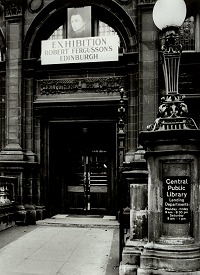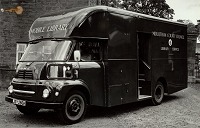Contents ![]() | Introduction
| Introduction ![]() | Institutes of learning
| Institutes of learning ![]()

'Free' public libraries
Page 2 of 2 | Back
Progress came only after Andrew Carnegie (1835-1919) stepped in. In 1886 Edinburgh accepted the Act and Carnegie gave £25,000 (later increased to £50,000) towards the cost of a new building. Carnegie repeated this action all over Scotland and beyond. His deal was that his trust would provide a grant towards a library building if a local council adopted the Act. Above the main entrance of Central Library is Carnegie's motto 'Let there be light'.
Edinburgh's Central Library was opened in 1890. It consisted of a newsroom, a lending library, a junior section and a reference department. 80,000 books were available when the Library opened. The first of the branch libraries opened a few years later.

Once established, municipal libraries grew. Prior to their opening people had needed some disposable income if they wished to access books and information. But public libraries operated under the terms of the Public Library Act (Scotland) were free and anyone could use them. Throughout the 20th century the local authorities absorbed more and more of the independent libraries (although some held out into the 1960s), eventually on a county basis. The creation of countywide services meant any reader had access to a very considerable book stock and with a full network of urban branches and rural mobile libraries. There were books for all on virtually each and every doorstep.
Page 2 of 2 | Back
In this section:
Circulating libraries | Subscription libraries | Itinerating libraries | Free public libraries
Contents ![]() | Introduction
| Introduction ![]() | Institutes of learning
| Institutes of learning ![]()